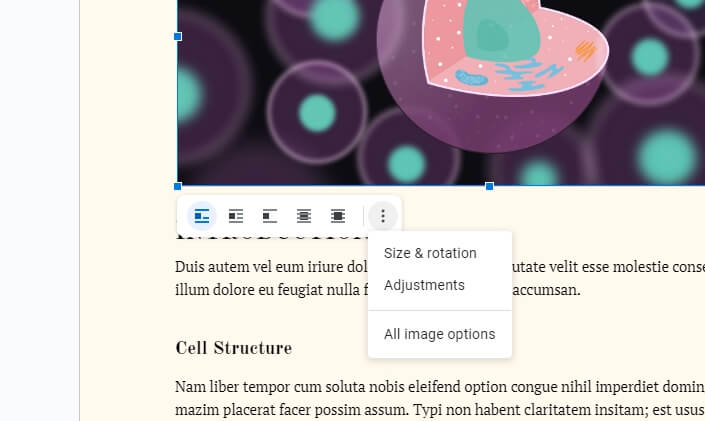Google Docs is a free web-based word processor that is part of Google’s G Suite productiveness software. With Google Docs, you can create, edit, store, collaborate on, and access documents from any device with an internet connection. This makes it an invaluable tool for businesses looking for an affordable document creation and storage solution.
In this guide, we’ll walk through how to use Google Docs to create common business documents like proposals, invoices, agendas, and more. We’ll also cover best practices for formatting, collaborating with team members, and optimizing your docs for search engine visibility. Whether you’re just getting started with Google Docs or looking to get more out of it, read on for the ultimate guide you need to create professional business documents.
Creating Business Documents in Google Docs
Google Docs offers robust formatting options on par with Microsoft Word and other desktop publishers. Let’s go over how to create some of the most common business documents.
Proposals and Quotes
Client proposals and quotes are essential for pitching your services and pricing projects. With Google Docs, you can craft polished proposals with just a few clicks.
Follow these best practices when creating proposals:
- Use a template: Start with a proposal template that has sections for the scope of work, pricing, terms and conditions, and more. This saves time instead of building from a blank doc.
- Add images and charts: Insert relevant photos, charts, and graphics to visualize services and add visual interest.
- Use headings and bullet points: Break up sections clearly with H2 and H3 headings. Use bullet points to list deliverables, pricing tables, etc. for easy scanning.
- Enable commenting: Turn on commenting to allow the client to provide feedback easily right within the document.
Invoices
Sending professional invoices quickly and getting paid on time is critical for cash flow. With Google Docs invoicing, you can generate invoices, track payments, and manage billing right from G Suite.
Follow these tips for creating invoices:
- Add your logo: Personalize invoices by adding your business logo at the top. Go to Insert > Image to upload your logo.
- Include payment terms: Clearly state your payment terms, like net 30 days, to avoid confusion. List accepted payment methods.
- Itemize everything: Break down each product/service rendered and the associated cost on separate lines.
- Enable auto-calculations: Go to Tools > Invoice to turn on auto-calculations for totals, taxes, etc. so everything adds up perfectly every time.
- Add a signature field: Use Forms to create a signature field the client can sign with one click to accept the terms.
Agendas and Minutes
From team meetings to board meetings, agendas and minutes are essential for productivity. Here are some tips for creating polished agendas and minutes in Google Docs:
- Use agenda templates: Take the work out of formatting agendas from scratch by starting with a template complete with agenda formatting.
- Organize talking points: For each agenda item, include 2-3 bullet points summarizing key talking points or conversation starters.
- Leave space for notes: Leave a large right margin to leave space for notes as the meeting progresses.
- Track attendance: For minutes, be sure to track everyone who attended the meeting for the record.
- Summarize discussions: For minutes, succinctly summarize the key discussion points and outcomes for each agenda item.
- Highlight action items: Call out action items by listing next steps and owners at the end so everyone is aligned on responsibilities post-meeting.
Formatting Tips for Polished Business Docs
With the right formatting, you can turn even simple Google Docs into polished, professional business documents. Follow these best practices:
Use Business Letter Templates
When drafting formal business letters, like cover letters or client communications, start with a professional business letter template in Google Docs to instantly apply the proper structure and formatting.
Add Headers and Footers
Make documents look more polished by adding headers and footers. In the View menu, enable the header and footer, then insert page numbers, your business name, the date, etc.
Use Styles for Consistent Formatting
Instead of manually formatting text, use Styles to apply custom paragraph styles for headings, quotes, captions, etc. This makes formatting super quick while keeping everything consistent.
Insert Tables
Organize data clearly by inserting tables. Customize the style, merge cells, auto-fill rows/columns, and more for flexibility.
Collaborating with Team Members
Google Docs shines for real-time collaboration. Follow these guidelines to work seamlessly with internal team members and external partners:
- Share access: Add collaborators manually or share a document link so others can access and edit. Control editing rights and set notifications.
- Use built-in comments: Discuss changes and provide feedback in real-time with commenting instead of endless email chains.
- See revision history: Review the revision history to see a time-stamped audit trail of every change made. Roll back to earlier versions if needed.
- Use @mentions: Use @mentions in comments to notify specific collaborators to provide input on sections relevant to them.
Optimizing for Search Engines
To help customers find your G Suite content in search engines like Google, optimize documents with these SEO best practices:
- Add a title: Create a descriptive title at the top with primary keywords. Use keywords your target customers would search.
- Include metadata: In the File menu, add metadata like a description and keywords.
- Use alt text for images: Add descriptive alt text to images to improve context for search engines.
- Structure content: Use properly formatted headings, lists, and paragraphs to make content more readable.
- Link to internal pages: Cross-link related content to pages on your website by adding hyperlinks.
Conclusion
With this comprehensive Google Docs guide, you have everything you need to create professional business documents that make collaboration and productivity a breeze. By following the best practices outlined above for proposals, invoices, agendas, and more, you can level up your business documentation game in Google Docs.





